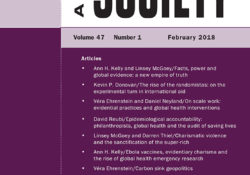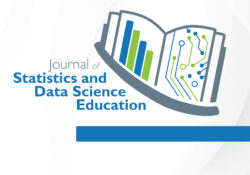eric.ed.gov har udgivet: In this brief, the authors propose three measures of “early momentum” for two reasons: Research is beginning to show that these near-term metrics predict long-term success, and the metrics focus attention on initial conditions at colleges that are particularly important for solidifying the foundation for student success. While these measures are valuable individually, as a group they give a better picture of the impact of reforms on students, and thus are more valuable if used together. These measures include: (1) Credit momentum–defined as attempting at least 15 semester credits in the first term or at least 30 semester credits in the first academic year; (2) Gateway momentum–defined as taking and passing “pathway-appropriate” college-level math and college-level English in the first academic year; and (3) Program momentum–defined as… Continue Reading →
Like this:
Like Loading...
tandfonline.com har udgivet en rapport under søgningen “Teacher Education Mathematics”: Abstract Abstract There have been concerns about the recent private turn and re-emergence of philanthropies in world health, with many worrying about philanthropies’ perceived lack of transparency and accountability. In contrast, I argue that while the private turn might have led to a decline in democratic or public accountability, it did not bring an end to all forms of accountability. Specifically, I suggest that philanthropists’ involvement in global health has led to the spread of another, new form of accountability: epidemiological accountability. The latter is a combination of two regimes of expertise and practices hitherto kept separate: audit and epidemiology. To substantiate this argument, I draw on my research on the Bloomberg Initiative – a global effort to reduce tobacco… Continue Reading →
Like this:
Like Loading...
tandfonline.com har udgivet en rapport under søgningen “Teacher Education Mathematics”: ABSTRACT ABSTRACT An upper-year undergraduate practical examination is presented that utilizes the EcoScale (a semi-quantitative tool) and several established mass metrics to assess student understanding of green chemistry principles. This activity focuses on the straightforward preparation of a benzodiazepine via three different catalytic methods, and the analysis of individual experimental data during laboratory time. Students learn about the structure of the EcoScale, apply it as a simplistic life cycle assessment, and critique it as a scientific model. The examination complements more traditional expository and self-design experiments within a synthetic course where green chemistry and sustainability are central themes. GRAPHICAL ABSTRACT Link til kilde
Like this:
Like Loading...
tandfonline.com har udgivet en rapport under søgningen “Teacher Education Mathematics”: ABSTRACT ABSTRACT The recent simulation-based inference (SBI) movement in algebra-based introductory statistics courses (Stat 101) has provided preliminary evidence of improved student conceptual understanding and retention. However, little is known about whether these positive effects are preferentially distributed across types of students entering the course. We consider how two metrics of Stat 101 student preparation (precourse performance on concept inventory and math ACT score) may or may not be associated with end of course student performance on conceptual inventories. Students across all preparation levels tended to show improvement in Stat 101, but more improvement was observed across all student preparation levels in early versions of a SBI course. Furthermore, students’ gains tended to be similar regardless of whether students entered… Continue Reading →
Like this:
Like Loading...


